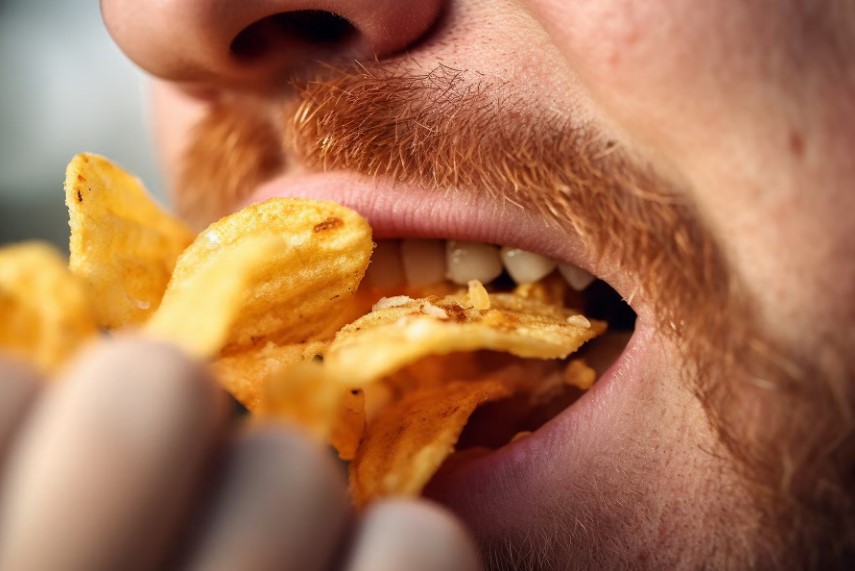Does Vaping Make You Hungry? Why & How to Deal With It?

Vaping, the act of inhaling and exhaling vapor produced by an electronic cigarette or similar device, has gained popularity in recent years as an alternative to traditional smoking. While vaping is often associated with nicotine consumption and potential health risks, some users have reported experiencing increased appetite or cravings after vaping.
Understanding the Link Between Vaping and Hunger
In this comprehensive guide, we delve into the potential reasons behind the connection between vaping and hunger, explore the scientific evidence supporting this phenomenon, and discuss practical strategies for managing increased appetite associated with vaping.
1. Nicotine Effects:
Nicotine, the primary psychoactive component in tobacco and many e-liquids used in vaping devices, has been shown to influence appetite regulation and metabolism. Nicotine acts as a stimulant, affecting neurotransmitter levels in the brain, including dopamine, serotonin, and norepinephrine, which play roles in mood regulation and appetite control.
2. Flavorings and Aromas:
Many e-liquids used in vaping devices contain a variety of flavorings and aromatic compounds designed to enhance the vaping experience. These flavorings can trigger sensory receptors in the brain associated with taste and smell, potentially stimulating appetite and cravings for food.
3. Oral Fixation:
Vaping often involves repetitive hand-to-mouth movements and oral stimulation, similar to smoking. For some individuals, the act of vaping may serve as a replacement for snacking or oral gratification, leading to increased appetite or cravings for food.
Scientific Evidence and Research Findings
While limited research has specifically investigated the relationship between vaping and appetite, several studies have explored the effects of nicotine and vaping on appetite regulation and metabolism:
1. Nicotine and Appetite:
Studies have shown that nicotine can influence appetite and energy balance through its effects on neurotransmitter systems and metabolic processes. Nicotine has been reported to suppress appetite and increase metabolic rate temporarily, leading to reduced food intake and weight loss in some individuals.
2. Flavorings and Aromas:
Research suggests that exposure to food-related cues, including flavors and aromas, can stimulate appetite and trigger food cravings. The sensory experience of vaping flavored e-liquids may activate brain regions involved in reward processing and appetite regulation, potentially influencing eating behavior.
3. Individual Variability:
Individual responses to vaping and nicotine can vary widely based on factors such as genetic predisposition, lifestyle factors, and underlying health conditions. Some individuals may experience increased appetite or cravings after vaping, while others may not notice significant changes in appetite.
Coping Strategies for Managing Increased Appetite
For individuals experiencing increased appetite or cravings after vaping, several strategies can help mitigate the effects and maintain healthy eating habits:
1. Stay Hydrated:
Drinking water throughout the day can help curb appetite and reduce cravings by promoting feelings of fullness and hydration. Opt for water or other calorie-free beverages to stay hydrated and minimize the urge to snack unnecessarily.
2. Practice Mindful Eating:
Pay attention to hunger cues and practice mindful eating by focusing on the sensory experience of food, including taste, texture, and aroma. Take your time to savor each bite, chew slowly, and tune in to your body’s signals of hunger and satiety.
3. Choose Nutrient-Dense Foods:
Opt for nutrient-dense foods rich in vitamins, minerals, and fiber to satisfy hunger and provide sustained energy throughout the day. Incorporate fruits, vegetables, whole grains, lean proteins, and healthy fats into your meals and snacks to support overall health and well-being.
4. Plan Balanced Meals and Snacks:
Plan balanced meals and snacks ahead of time to prevent impulsive eating and make healthier choices throughout the day. Include a combination of protein, carbohydrates, and fats in each meal to promote satiety and prevent energy crashes.
5. Engage in Physical Activity:
Regular physical activity can help regulate appetite, boost metabolism, and promote overall health and well-being. Incorporate activities you enjoy, such as walking, cycling, swimming, or yoga, into your daily routine to stay active and reduce stress.
6. Seek Support and Accountability:
Reach out to friends, family members, or support groups for encouragement and accountability in managing appetite and cravings. Share your experiences, set realistic goals, and celebrate achievements together as you work towards maintaining a balanced and healthy lifestyle.
Conclusion
While vaping has become a popular alternative to traditional smoking, some individuals may experience increased appetite or cravings as a result of nicotine exposure, flavorings, and oral fixation associated with vaping. Understanding the potential factors contributing to increased appetite after vaping and implementing practical coping strategies can help individuals manage cravings, maintain healthy eating habits, and support overall well-being. By staying mindful of hunger cues, making nutritious food choices, staying hydrated, and engaging in regular physical activity, individuals can navigate the challenges of increased appetite associated with vaping and promote a balanced and fulfilling lifestyle. As with any lifestyle change, it’s essential to listen to your body, seek support when needed, and prioritize your health and well-being above all else.
